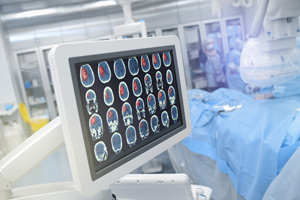Brain imaging may help determine surgeon skill
Use of optical neuroimaging may objectively and successfully classify expertise levels associated with bimanual motor dexterity among surgeons and medical students compared with conventional measures, according to a recently published study.
Researchers classified 17 surgeons as novices or experts and 13 medical students as skilled or unskilled trainees. Each participant performed a fundamentals of laparoscopic surgery (FLS) pattern cutting task using a FLS-certified simulator. Researchers compared the groups with a control group consisting of medical students who underwent no training. Researchers recorded total task time, light intensity and performance scores for the pattern cutting task based on FLS metrics, as well as real-time cortical activation, including prefrontal cortex, primary motor cortex and supplementary motor area measurements, using functional near-infrared spectroscopy.
Results showed expert surgeons significantly outperformed novice surgeons in FLS performance score. Although researchers found no significant differences in FLS performance score between the untrained control group and trained group on day 1 or in the pretest, participants in the trained group significantly outperformed the untrained control group on the final posttest.

Researchers then quantified real-time hemodynamic activation over the prefrontal cortex, primary motor cortex and supplementary motor area cortical regions to confirm that the neuroimaging methodology could discriminate between established skill levels. Compared with expert surgeons, researchers found significantly higher functional activation in the prefrontal cortex regions and significantly lower functional activation in the left medial primary motor cortex and supplementary motor area regions in novice surgeons. According to results, upon training completion and after a 2-week break, skilled trainees exhibited increased cortical activation in the left medial primary motor cortex and supplementary motor area and decreased prefrontal cortex activation vs. unskilled trainees.
When all training students were compared with the control group, researchers noted no significant differences at the onset of the training program. However, a significantly lower functional activation in the left lateral and right lateral prefrontal cortex was exhibited in both the skilled and unskilled trainees at the completion of the training and after a 2-week break period compared with untrained control students. During the posttest, results showed significantly higher left medial primary motor cortex and supplementary motor area activation among students trained in FLS vs. untrained control students. – by Casey Tingle
Disclosures: The authors report no relevant financial disclosures.
